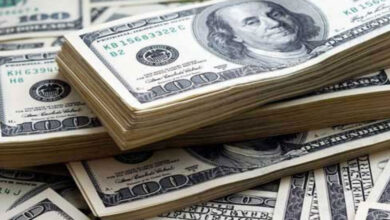The dollar falls as more people expect the Fed to be less hawkish; Australian stocks rise following CPI.

On Wednesday, the dollar was stuck near a three-week low against its major rivals, as more signs of a weakening U.S. economy fueled rumours about a less “hawkish” Federal Reserve.
As hotter-than-expected inflation data put pressure on the Reserve Bank before a rate decision next week, the Australian dollar rose to almost the same level as in the previous session, which was the highest level in 2 1/2 weeks.
Sterling stayed close to the six-week high it hit on Tuesday, after the new British Prime Minister, Rishi Sunak, promised to lead the country out of an economic crisis and kept Jeremy Hunt as finance minister.
Related: The Dollar and Pound Rise Before Sunak’s Appointment
The euro also stayed close to a six-week high, trading less than a half cent away from being the same value as the dollar. On Thursday, the European Central Bank will make a policy decision. Most people think that rates will go up by 75 basis points.
The dollar index, which compares the dollar to six other currencies, such as the pound, the euro, and the yen, was unchanged at 111.01. This was close to the previous session’s low of 110.75, which was the lowest level since October 5.
Overnight data showed that U.S. home prices went down in August because rising mortgage rates hurt demand. This comes after recent signs that the Fed’s rate hikes are already slowing the world’s biggest economy.
Traders and economists think that the rate will go up by another 75 basis points next Wednesday. However, there is a growing belief that the rate will slow to half a point in December.
“I’m still on the fence about whether we can say the U.S. dollar has reached its peak,” said Ray Attrill, head of FX strategy at National Australia Bank. But evidence of a slowdown is building, “he added (OTC:NABZY).
“If the market gets really comfortable with a Fed pivot, if that’s what stepping down to 50 basis points and possibly ending a tightening cycle south of 5% early next year is, then it will be time to call time on U.S. dollar strength,” but I’d like to hear what the Fed says next week before coming to that conclusion.
Long-term U.S. Treasury yields have been falling since they hit a multi-year high of 4.338% last week. In Tokyo, they fell to 4.0941%.
Because the yen is sensitive to U.S. interest rates, the dollar was put under pressure against the yen. However, the dollar managed to gain 0.22% to 148.265, making up some of the 0.7% it lost on Tuesday.
On Friday, the dollar hit a 32-year high of 151.94 yen, but it fell as low as 144.55 yen after two possible Bank of Japan (BOJ) interventions before and after the weekend.
Even so, the fundamentals still point toward a weaker yen, and the BOJ is expected to keep its stimulus settings the same on Friday. This goes against the trend of their developed-market peers to tighten their money supply.
The euro fell 0.13 percent to $0.9957 after reaching a high of $0.9995 on October 5.
Sterling fell 0.16 percent to $1.1454, but it was still close to Tuesday’s high of $1.1500, which was the last time it was that high since September 15.
“Now that it’s official that Jeremy Hunt will stay on as Chancellor, we think the political discount to GBP is fading,” a strategist at Commonwealth Bank of Australia (OTC:CMWAY) named Joseph Capurso wrote in a client note.
However, GBP still faces a number of headwinds, such as an upcoming recession and a growing current account deficit, “he said.
The Australian dollar went up 0.11 percent to $0.6401, which is close to Tuesday’s high of $0.6412, which was the highest since October 7.
The RBA will decide on policy on Tuesday. It is now under pressure to either go back on its decision from the last meeting to slow the rate of rate hikes or to keep going with its tightening campaign. After seeing the data, both NAB and ANZ raised their predictions for the RBA’s end rate.
Related: The strong dollar and competition from Gilenya reduce Novartis earnings by 4%.
But while that should help the currency, it has also been hurt by people’s fear of taking risks because stock markets around the world are weak and the economy of China isn’t doing well.
“The cloud of worry over China could hang over the Australian dollar for a while,” said Sean Callow, a senior FX strategist at Westpac.
The best chance for the Aussie to stay above $0.64 seems to be for the U.S. dollar to fall further. If not, it will trade on either side of $0.63. ”
After big gains on Tuesday, when the dollar fell, cryptocurrencies were strong. After a 3.9% rise overnight, Bitcoin was worth $20,157, up 0.35%. At $1,479.40, ether was up 1.3%, adding to Tuesday’s 8.7% rise.





